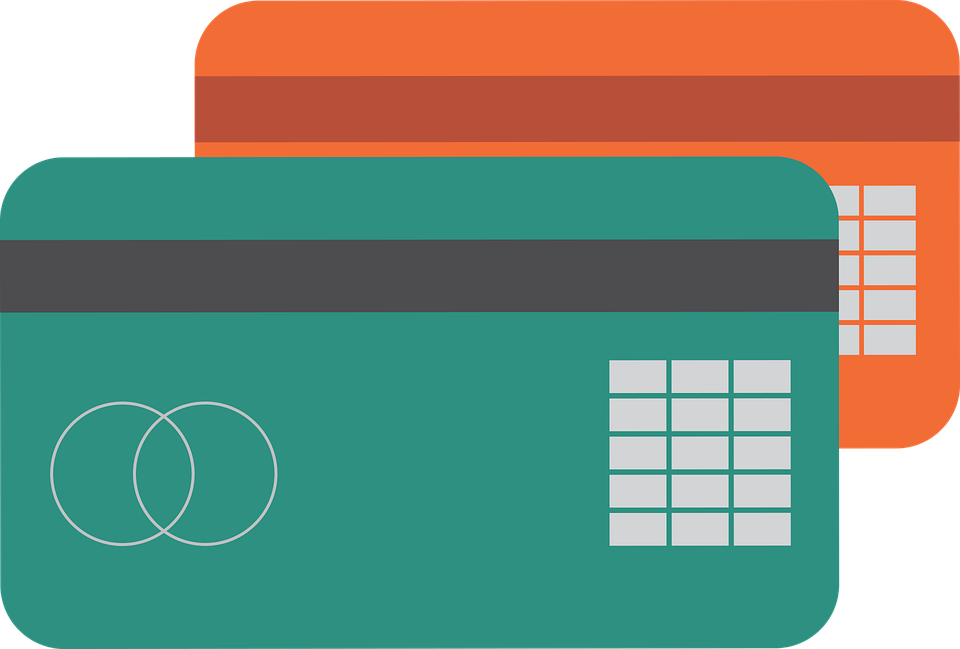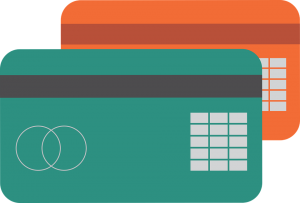
5 Ways to Finance Your Small Business

There’s an old saying that you need money to make money. Regardless of what type of small business you’re planning to launch, you’ll need money to cover expenses like inventory, marketing, payroll and more. The good news is there are several financing options available for small businesses, some of which include the following.
#1) Credit Cards
While not ideal due to their high interest rates, credit cards offer a simple and effective financing option for small businesses. Even if you don’t have any business credit cards, you can still use your personal credit cards; you’ll just need to keep track of how much money you put on your personal credit cards so that you can reimburse “yourself” for it later.
#2) Venture Capital
Venture capital has become a popular financing method for small businesses. What is venture capital? This alternative financing method involves selling some of your company’s equity shares to an investment company known as a venture capital firm. Venture capital firms make money by investing in early-stage businesses with strong growth potential. Assuming your small business is
#3) SBA Loan
Another way to finance your small business is to use a Small Business Administration (SBA) loan. SBA loans aren’t actually offered by the SBA. Rather, they are offered by banks that follow the SBA’s requirements. When compared to standard bank-issued business loans, SBA loans are typically less restrictive with lower interest rates and associated fees.
#4) Angel Investors
You could also try partnering with one or more angel investors to finance your small business. Angel investors are individuals who invest in businesses. Like venture capital firms, they purchase equity in businesses that are poised to grow. If you can project your small business as having strong growth potential, you might be able to secure financing through one or more angel investors.
#5) Crowdfunding
Over the past few years, crowdfunding has become more and more common among small businesses. As the name suggests, crowdfunding involves tapping into a “crowd” of investors to “fund” your small business. Depending on the type of crowdfunding platform you use, as well as your offer, you may able to tap into a large pool of hundreds or even thousands of investors. Crowdfunding is particularly effective when funding unique business ideas, including innovative products and services.
Have anything else that you’d like to add? Let us know in the comments section below!

Cloud vs On-Premise Computing: What You Should Know

Are you familiar with the differences between cloud and on-premise computing? As a business owner, you’ll probably need an information technology (IT) infrastructure to facilitate your operations. From marketing and sales to accounting and payroll, an IT infrastructure is vital to your business’s success. With that said, one of the decisions you’ll have to make when setting up your business’s IT infrastructure is whether to use a cloud or on-premise computing model.
What Is Cloud Computing?
Cloud computing is a computing model in which a business pays to use the virtual resources of a third-party cloud vendor. Cloud vendors sell CPU and disk space — as well as other virtual resources — to businesses and consumers. With cloud computing, you can purchase these virtual resources to use in your business’s IT-related operations.
What Is On-Premise Computing?
On-premise computing is a traditional computing model in which a business purchases and installs the computing equipment locally. Setting up a desktop PC in an office is an example of on-premise computing. A business can use the PC to run applications, store data and more. Since the PC is installed and used locally, it’s considered on-premise computing.
The Benefits of Cloud Computing
Cloud computing has become increasingly popular in recent years, partly because of the convenience it offers. You don’t have to purchase computers or other IT equipment, nor do you have to install or maintain them. You can simply buy virtual resources from a cloud vendor.
Another benefit of cloud computing is scalability. If your business expands, you can purchase a higher-tiered plan that includes more virtual resources. If your business contracts, you can downgrade to a lower-tiered plan with fewer virtual resources to save money.
The Benefits of On-Premise Computing
Some business owners prefer on-premise computing because it gives them full control over their IT equipment as well as their data. With cloud computing, the cloud vendor will control your business’s IT equipment and data. The good news is that most cloud vendors are reputable and trustworthy. Therefore, this shouldn’t be a concern if you choose the right cloud vendor for your business.
On-premise computing doesn’t rely on an active internet connection. If your business’s internet connection goes down, you won’t be able to use a cloud computing service. You can, however, use on-premise computing.
What are your thoughts on cloud vs on-premise computing? Let us know in the comments section below!

The 2 Ways to Record CC Payments in Quickbooks

Do you use credit cards to purchase business-related products or services? Well, you aren’t alone. Millions of businesses owners across the country prefer using credit cards over other forms of payment because of their unparalleled level of convenience. Whether you’re purchasing a product or a service for your business, though, you’ll need to record the credit card transaction in Quickbooks.
#1) Recording Credit Card Payments With a Check
Quickbooks Online supports several different ways to record credit card transactions, one of which is to write a check. Form the home screen, click the “+ New” button on the main menu, followed by “Check” under the “Vendors” column. You can now select the bank associated with the credit card in the “Bank Account” field. Next, enter the check number, or if you paid using EFT, enter “EFT” in this field. When finished, add the amount of the payment, followed by “credit card” in the “Account” field. To complete the process, choose “Save and Close.”
#2) Recording Credit Card Payments With a Transfer
Another way to record credit card payments in Quickbooks is to create a transfer. From the home screen, click the “+ New” button once against, but this time click the “Transfer Funds From” drop-down menu, and select the bank account associated with the credit card. Next, click the “Transfer Funds To” drop-down menu and select the account to which the credit card payment was made. You can then enter the total amount of the credit card transaction in the “Transfer Amount” field. To complete the process, click “Save.”
What About Making Credit Card Payments?
While the above steps will allow you to record credit card payments in Quickbooks, you might be wondering how to make credit card payments in the first place.
To make a credit card payment after reconciling your credit card account, head back over to the home screen and choose Settings > Tools > Reconcile, after which you can select the credit card from which you’d like to make the payment. Next, complete the fields in the “Reconcile window,” and assuming the difference is zero, choose “Finished.” You can then select your desired method of payment.
If you’re going to use a credit card to purchase products or services related to your business’s operations, you’ll need to record transactions in Quickbooks. Failure to do so will result in your financial records being inaccurate, which could lead to a world of heartache when trying to optimize your business’s performance and revenue.
Did this tutorial work for you? Let us know in the comments section below!

Does Direct Mail Marketing Still Work?

When researching ways to market your small business, you’ll probably come across direct mail. It’s been around for decades, allowing businesses to reach their target audience with their ads and marketing messages. With the rise of email, however, you might assume that direct mail is no longer effective. While the performance of a direct mail marketing campaign varies depending on countless factors, you can rest assured knowing that it still works.
Instills Trust
You can build a more trustworthy brand image for your small business using direct mail. Research shows that nearly six in 10 consumers trust direct mail. When a recipient discovers a direct mail ad from your small business in his or her mailbox, the recipient will naturally trust your small business a little more. Over time, this may compel the recipient to contact your small business with the intention of purchasing a product or service.
High Response Rate
In addition to a more trustworthy brand image, direct mail offers a high response rate. A DMA Response Rate Report found that the average response rate for direct mail in the United States is over 5%. To put that number into perspective, email has an average response rate of just 0.1%, whereas social media has an average response rate of just 0.4%.
High ROI
Direct mail also offers a high return on investment (ROI). According to the same DMA Report previously mentioned, the average ROI for direct mail is 29%. Therefore, you can expect direct mail to drive more revenue for your small business than its cost. Keep in mind that many businesses experience even higher ROIs with direct mail.
Target Specific Households
With direct mail, you can target specific households to achieve better results. In other words, you aren’t forced to send direct mail to all households. You can choose households in specific ZIP codes or cities as well as households with a specific income range. These are just a few targeting options offered with direct mail. The bottom line is that you’ll have the freedom to create narrow marketing campaigns that reach your small business’s audience of customers or clients.
In Conclusion
While millions of people now use email as their primary method of communication with businesses, direct mail can still prove useful. It instills trust, offers a high response rate and ROI, and it allows you to target specific households.
Have anything else that you’d like to add? Let us know in the comments section below!

How to Add, Edit and Match Receipts in Quickbooks

When purchasing products and services used to facilitate your business’s operations, you’ll need to keep track of your receipts. Each receipt is a document of a financial transaction. It shows the type of product or service you purchased, how much you paid for it and when you purchased it (among other things). If you use Quickbooks for your business’s accounting needs, you can easily add, edit and match receipts.
How to Add a Receipt
To add a receipt to Quickbooks Online, you’ll need to scan it using the Quickbooks Accounting: Invoicing and Expenses mobile app on your smartphone or tablet computer. Once downloaded and installed, launch the app and tap the menu icon. Next, choose “Receipt Camera,” after which you can take a photo of the receipt. The app will then scan the receipt and add the information to your account.
When scanning receipts with the mobile app, you’ll need to same the images in the appropriate format. The mobile app supports several file formats for scanned receipts, including jpeg, gif, png and even PDF. If you’re using a new Apple iPhone, you may not have the option of choosing one of these file formats. Instead, Apple uses HEIC as the default file format for saved images. Therefore, you’ll need to scan and save your receipts as an HEIC file, after which you can convert the HEIC files into one of the aforementioned file types.
How to Edit a Receipt
If the information pulled from a scanned receipt isn’t correct, you’ll need to edit it. From inside the mobile app, choose “Review” for the receipt that you’d like to edit. From here, you can edit the information contained in the receipt.
How to Match a Receipt
You’ll also need to match scanned receipts to an expense recorded in your Quickbooks account. Matching, as the name suggests, connects a receipt to a specified expense recorded in your Quickbooks account. To match a receipt, choose the “Match” option.
Whether you use a credit card, debit card or cash to make a local purchase for your business, you’ll probably receive a receipt. To prevent these expenses from inflating your tax liabilities, you’ll need to record them. Thankfully, Quickbooks makes it easy to keep track of receipts. You can add, edit and match receipts using the Quickbooks mobile app.
Did this tutorial work for you? Let us know in the comments section below!

Choosing the Right Payment Solutions for Your Business

What forms of payment does your small business accept? Not all customers will use the same method of payment. If a customer prefers a specific payment that’s not offered by your small business, he or she may leave and visit a competitor’s business from which to purchase the product or service. So, what type of payment solutions should your small business accept?
Cash
Even with the advent of digital payments, cash remains the preferred form of payment among most consumers. According to one study, 30% of all transactions involve cash. It’s a universally known and recognized payment solution that keeps the wheels of commerce turning. Cash offers an unparalleled level of convenience when compared to other forms of payment. As long as a customer has cash, he or she can make a purchase. As a result, your small business needs to accept cash payments. Otherwise, you’ll struggle to attract and retain customers.
Check
In addition to cash, you should consider accepting check payments at your small business. Assuming you have a checking account at a bank, you should be able to deposit check payments received from your small business’s customers. You may incur checking account fees, but most banks don’t charge for check deposits. The downside to accepting check payments, of course, is the potential for a bounced check. If the customer has insufficient funds in his or her account, the check may not clear.
Credit Card
All small businesses can benefit from embracing credit card payments. According to Fundera, over three in four consumers have at least one open credit card. With credit card payments, you’ll typically have a pay a fee per each transaction. Depending on the specific type of credit card payment solution, you can expect a per-transaction fee of around 25 cents and 3%.
Mobile Payment
In recent years, more and more businesses have embraced mobile payment solutions. What is a mobile payment exactly? As the name suggests, it’s a type of digital payment that requires a smartphone, tablet or other mobile device. The customer must first install and set up an app on his or her mobile device. Once configured, the customer can use the app to purchase products or services.
Whether your small business operates locally at a brick-and-mortar location or on the internet, you should consider accepting multiple forms of payment.
Have anything else that you’d like to add? Let us know in the comments section below!

How to Revert a Sub-Account Back to a Parent Account

Do you have a sub-account in your business’s chart accounts that requires changing back to a parent account? Quickbooks supports a hierarchy of accounts consists of top-level parent accounts and lower-level sub-accounts. However, it’s not uncommon for the “tier” status of an account to change. If you need to revert a sub-account back to a parent account, keep reading to learn the step-by-step instructions on how to perform this common accounting task.
Steps to Changing a Sub-Account to a Parent Account
In Quickbooks Online, you can change a sub-account to a parent account by clicking the “Settings” link on the home screen and “Chart of Accounts.” You should see then see a list of all accounts in your business’s chart of accounts. Scroll through this list and click the “Edit” button for the sub-account that you want to revert back to a parent account. A new window will appear asking if the account is a sub-account. Click the confirmation box to remove the checkmark. When finished, click “Save and Close” to complete the process.
Steps to Changing a Parent Account to a Sub-Account
Of course, you can also change parent accounts to sub-accounts in Quickbooks. The steps are pretty much the same, except you’ll need to tick the box asking if the account is a sub-account. So, pull back up your chart of accounts, click the “Edit” button for the parent account that you want to change to a sub-account, and then tick the box asking if it’s a sub-account.
What’s the Purpose of Sub-Accounts?
You might be wondering what purpose, exactly, sub-accounts serve in accounting. Well, sub-accounts are completely optional, but they can still help you track your expenses and income more closely. Using sub-accounts, you’ll be able to separate specific channels of income or revenue.
If you own a restaurant, for example, you can create a sub-account for each of your utility expenses, such as gas, water, telephone, electricity, etc. The parent account for these sub-accounts can simply be “utilities.” On the other hand, if you run a retail store and use a multi-channel sales strategy, you can set up a parent-account for each of your sales channels, such as locally, your business’s website, your business’s social media profile, etc.
Keep in mind that all sub-accounts must have a parent account. If you’re going to make an account a sub-account, you must assign it to a parent account.
Did this tutorial work for you? Let us know in the comments section below!

Is Your Small Business Vulnerable to Cyber Attack?

As a small business owner, you might assume that your business is safe from cyber attacks. After all, large companies typically have more money, as well as more data, than smaller businesses, so conventional wisdom may lead you to believe that only large companies are targeted. The reality, however, is that all types of businesses are targeted by hackers, including small businesses.
The Rise of Small Business Cyber Attacks
You might be surprised to learn that cyber attacks against small businesses has increased over the years. According to research cited by Forbes, over half of all intrusions, malware insertions and other forms of commercially-focused cyber attacks last year targeted small businesses. With cyber attacks against small businesses on the rise, you should use this opportunity to evaluate your small business’s cybersecurity strategy.
Create Strong Passwords
The first layer of protection against a cyber attack is strong passwords. Short passwords are undoubtedly easier to remember than long passwords. Unfortunately, though, they offer minimal protection against cyber attacks. Hackers may perform a brute-force attack against your small business that involves guessing the correct password. If it’s short or otherwise weak, a brute-force attack could lead to serious consequences for your small business.
Change Passwords Every Few Months
In addition to creating strong passwords for all your small business’s login-protected accounts, you should change your passwords at least once every two to three months. Failure to change your passwords on a regular basis could result in a hacker guessing or otherwise identifying the correct password for one of your accounts.
Install Anti-Malware Software
Anti-malware software can help protect your small business from cyber attacks. Anti-malware software, of course, is software that protects against malware. It designed to both prevent and treat malware infections. If a hacker tries to deploy malware on one of your small business’s computer, anti-malware software should block the attack.
Use a Firewall
Finally, using a firewall can strengthen your small business’s security and, therefore, lower the risk of a cyber attack. What is a firewall exactly? When used in the context of information technology (IT), a firewall is a type of software application that’s designed to filter malicious and potentially malicious traffic. It automatically scans all incoming and outgoing traffic for signs of a cyber attack. If the firewall detects a potential attack, it will block the traffic.
Have anything else that you’d like to add? Let us know in the comments section below!
5 Lead Generation Strategies for Small Businesses

Are you struggling to generate leads for your small business? Regardless of what your small business sells, you’ll need high-quality sales to whom you can pitch your products or services. Unfortunately, many small businesses have a lackluster lead generation that hinders their ability to succeed. If this sounds familiar, you should consider the five following strategies to generate more leads for your small business.
#1) Direct Mail
Direct mail offers a highly effective channel for generating leads. Statistics show that over one in two consumers believe print-based ads, including direct mail, are the most trustworthy of all marketing channels. With direct mail, you’ll be able to target households within your small business’s key market regions, allowing for high-quality leads that are easy to convert into customers.
#2) Email
Along with direct mail, you can use email to generate more leads for your small business. One report found that that email is the single most popular lead generation channel for business-to-business (B2B) businesses. Whether your business sells to other businesses or consumers, though, you can use email to attract more leads. Just set up a newsletter, at which point prospective customers can provide their email addresses to receive updates and news via email.
#3) Social Media
Of course, social media has become an increasingly popular lead generation channel among small businesses. Statistics show over three in four U.S. adults have a Facebook account. Facebook, however, is just one of many social media networks. By creating an active presence on the leading social media networks, including Facebook, you’ll attract more leads to your small business.
#4) Ask in Person
Assuming your small business operates locally, you can ask prospective customers for their information in person. Even if a shopper doesn’t make a purchase, you can still ask for his or her contact information so that you can reach out with deals and promotions in the future. If the shopper obliges, you’ll have a new lead to whom you can pitch your small business’s products or services.
#5) Blog
Does your small business have a blog? If not, you should consider creating one. A form of content marketing, blogging is a highly effective lead generation strategy. As you create high-quality posts that are relevant to your small business’s audience, you’ll create a steady flow of new, high-quality leads.
Know any other lead generation strategies that you’d like to share with our readers? Let us know in the comments section below!
How to Send Transaction Statements to Donors in Quickbooks

Do you operate or help run a nonprofit organization? If so, you may need to send transaction statements to donors? In most states, nonprofit organizations are legally required to send some or all of their donors statements about their transactions. The purpose of this is to provide a high level of transparency regarding the way in which nonprofit organizations spend and generate money. While you can always create and send transaction statements manually, an easier way to automate the process using Quickbooks.
Steps to Sending a Transaction Statement in Quickbooks
To send a transaction statement in Quickbooks, you’ll need to log in to your account and click “Sales” on the main left-hand menu, followed by “Donors.” You should then see a list of all your nonprofit organization’s donors. Scroll through this list and choose the donor to whom you want to send a transaction statement.
After selecting the appropriate donor, select “Create statement” under the “Action” drop-down menu. Next, choose “Transaction Statement” for the “Statement Type” drop-down menu. You can then specify the date range for the statement. When finished, click the “Save and send” button at the bottom. Quickbooks will then save the transaction statement while simultaneously emailing a copy of it to the respective donor.
How to Create Multiple Transaction Statements
Of course, it can take a while to create a transaction statement for each of your nonprofit organization’s donors. The good news is that Quickbooks allows you to create multiple transaction statements at once.
To create multiple transaction statements, click on the (+) icon on the home screen and choose “Statement” under the “Other” menu. Next, choose the option for “Transaction Statement” under the “Statement Type” drop-down menu. Like when creating single transaction statements, you must then enter a date range for the statement. When finished, click “Apply.”
Now you’ll have the option of specifying which donors you want to receive the transaction statement. Click the “Statements available” button, after which you can place a check mark next to the donors whom you wish to receive the transaction statement. To complete the process, click “Save and send.”
In Conclusion
Quickbooks makes it easy for nonprofit organizations to create and send transaction statements to their donors. Whether you need to send a statement to a single donor or 100 donors, the popular accounting software can take this burden off your shoulders.
Did this tutorial work for you? Let us know in the comments section below!
